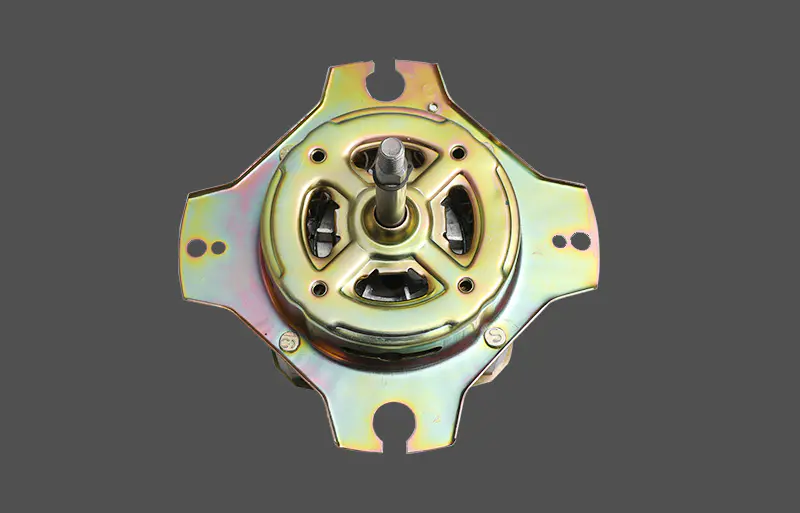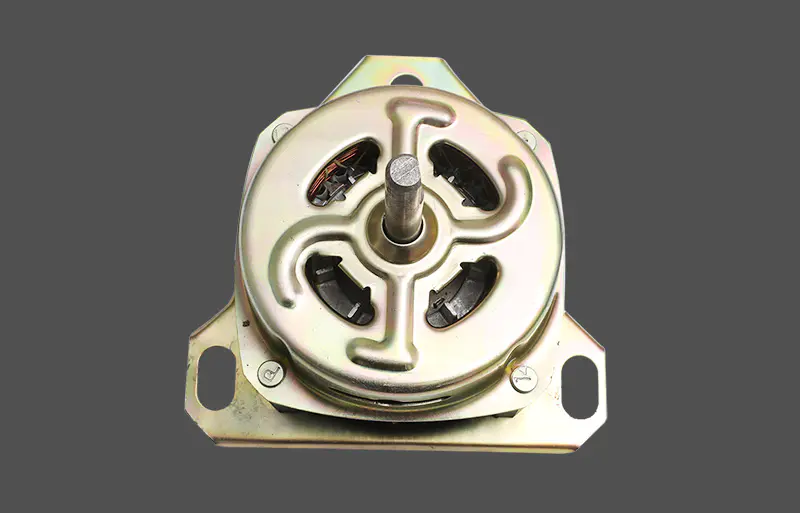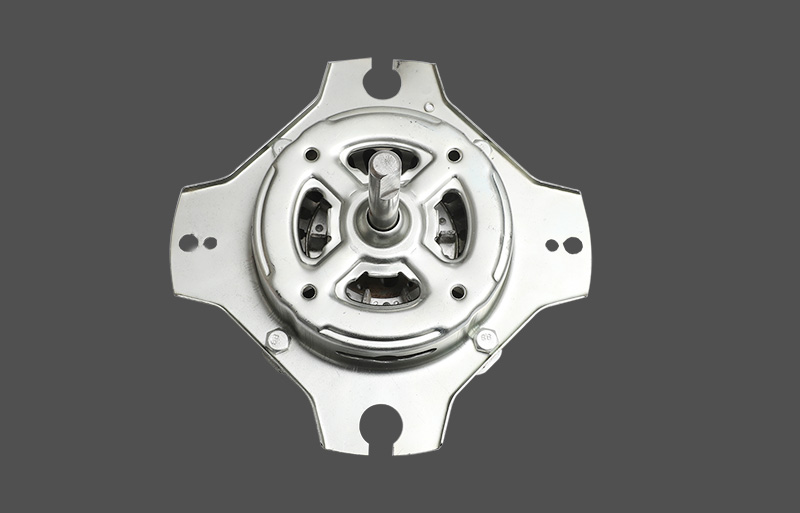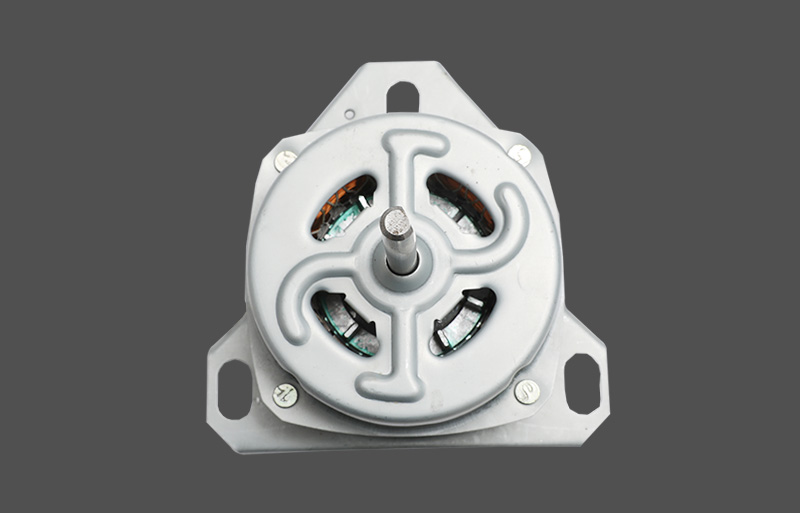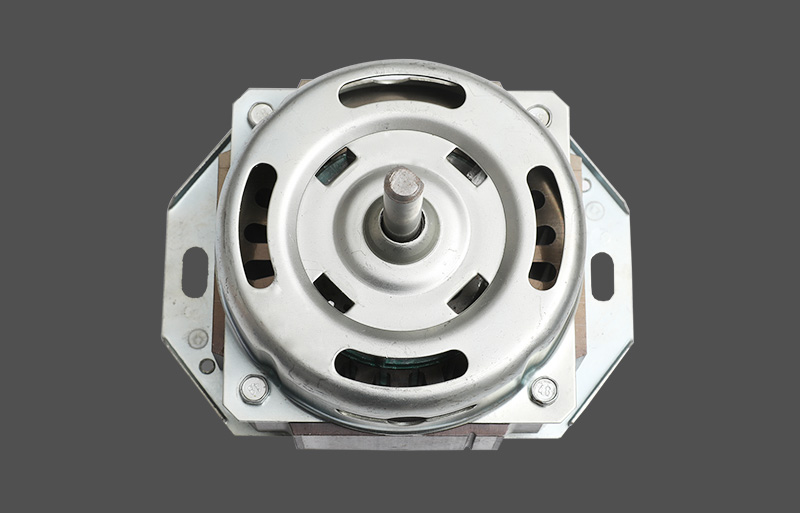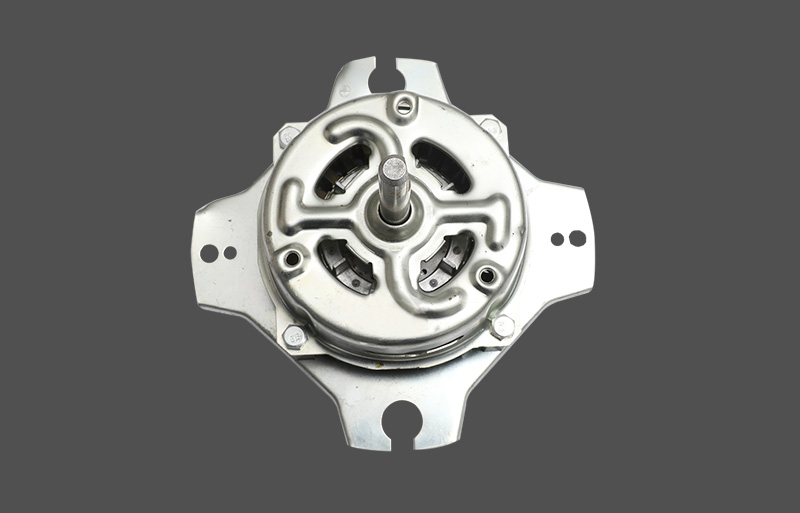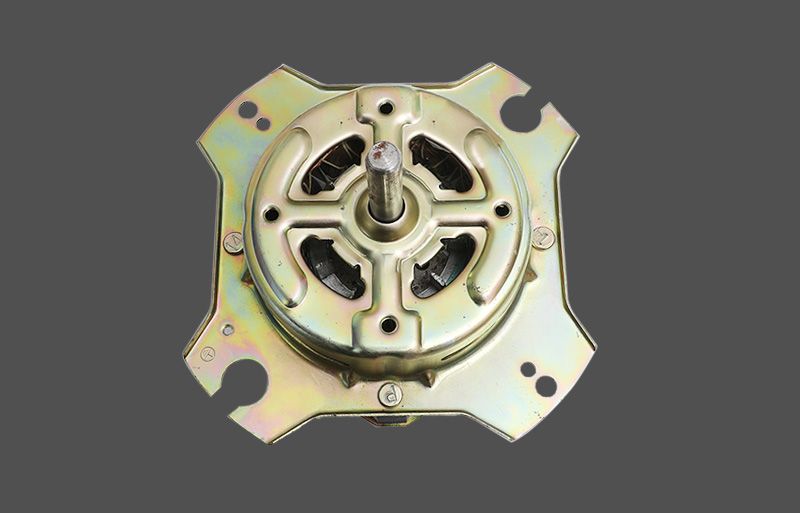A ventilator motor, also known as a fan or blower motor, is a mechanical device that converts electrical energy into mechanical energy to drive a fan or blower. Its primary function is to move air, ensuring proper ventilation in a wide range of environments. These motors are crucial for maintaining air quality, controlling temperature, and providing a safe and comfortable atmosphere.
Ventilator motors are essential in various applications, from providing fresh air in buildings to regulating temperature in industrial processes and delivering life-saving breathing assistance in medical settings. Their importance lies in their ability to reliably and efficiently move large volumes of air, which is vital for human health, equipment functionality, and process control.
This article provides an overview of the different types of ventilator motors, their specific applications, and essential maintenance practices to ensure optimal performance and longevity.
Types of Ventilator Motors
There are two primary categories of ventilator motors: AC and DC. Each has distinct characteristics that make it suitable for different applications.
AC Motors
AC (Alternating Current) motors are widely used in industrial and commercial ventilation due to their robustness, low maintenance, and cost-effectiveness.
-
Induction Motors: These are the most common type of AC motor. They operate by using an electromagnetic field from a stator to induce a current in the rotor, creating motion. They are simple in design, reliable, and come in single-phase or three-phase configurations.
-
Synchronous Motors: Unlike induction motors, the rotor in a synchronous motor rotates at the same speed as the magnetic field of the stator. They are used in applications requiring precise speed control and high efficiency but are generally more expensive and complex.
DC Motors
DC (Direct Current) motors are known for their excellent speed control and high efficiency, making them ideal for applications that require precise airflow and energy savings.
-
Brushed DC Motors: These motors use brushes to transfer current to the rotor. While they are simple and inexpensive, the brushes wear out over time, requiring maintenance and generating electrical noise.
-
Brushless DC Motors (BLDC): These motors use electronic controllers instead of brushes, eliminating wear and tear. BLDC motors are highly efficient, have a long lifespan, and offer superior speed control, making them a popular choice for medical and high-efficiency HVAC systems.
Specialty Motors
-
Explosion-Proof Motors: Designed for hazardous environments where flammable gases or dust are present. These motors are built with robust housings to prevent sparks from igniting the surrounding atmosphere.
-
High-Efficiency Motors: These motors are designed to reduce energy consumption and operating costs. They incorporate advanced materials and designs to minimize energy losses.
Comparison of Motor Types
| Feature |
Induction Motors (AC) |
BLDC Motors (DC) |
Brushed DC Motors (DC) |
| Speed Control |
Limited (requires VFD) |
Excellent |
Good |
| Efficiency |
Good |
Excellent |
Good |
| Cost |
Low |
High |
Low |
| Maintenance |
Low |
Very Low |
High |
| Lifespan |
Long |
Very Long |
Shorter |
| Noise |
Moderate |
Low |
Moderate to High |
Applications of Ventilator Motors
Ventilator motors are essential across numerous industries, each with specific requirements for airflow, durability, and control.
-
Industrial Ventilation Industrial settings use powerful ventilator motors for both exhaust fans and supply fans. Exhaust fans remove stale air, fumes, and contaminants from a workspace to improve air quality and safety, while supply fans bring in fresh air. These systems often utilize robust AC induction motors due to their reliability and ability to handle continuous, heavy-duty operation in harsh environments.
-
HVAC Systems In Heating, Ventilation, and Air Conditioning (HVAC), motors are the heart of air movement. Air Handling Units (AHUs), which condition and circulate air throughout large buildings, rely on powerful ventilator motors. Fan Coil Units (FCUs), which provide localized heating and cooling in individual rooms, use smaller motors. Brushless DC (BLDC) motors are increasingly popular in modern HVAC systems due to their superior energy efficiency and precise speed control, which allows for optimal temperature and humidity management.
-
Medical Ventilators Medical ventilators are life-saving devices that require extremely reliable and precise motors. These machines, including ICU ventilators and portable ventilators, use ventilator motors to deliver a controlled mixture of air and oxygen to a patient's lungs. The quiet operation and precise speed control of BLDC motors are critical here, as they allow for accurate air pressure and volume delivery, essential for patient safety and comfort.
-
Agricultural Ventilation In agriculture, ventilator motors are used to regulate temperature, humidity, and air quality in facilities like barns, poultry houses, and greenhouses. Proper ventilation is vital for preventing heat stress in livestock and promoting healthy crop growth. These motors must be durable and often corrosion-resistant to withstand the challenging, often humid and dusty, agricultural environment.
Key Components and Functionality
To understand how a ventilator motor works, it's essential to know its core components and their functions.
-
Stator and Rotor: These are the two fundamental parts of any electric motor. The stator is the stationary, or fixed, part of the motor. It contains the motor windings. The rotor is the rotating component, attached to the shaft that drives the fan impeller. The interaction between the magnetic fields generated by the stator and the rotor is what creates the rotational force, or torque, that moves the air.
-
Motor Windings: The windings are coils of insulated wire (typically copper) placed in the stator. When electricity flows through these windings, they create a magnetic field. The specific arrangement and number of windings are critical for determining the motor's speed, torque, and efficiency.
-
Bearings and Lubrication: Bearings support the motor shaft, allowing the rotor to spin smoothly with minimal friction. Common types include ball bearings and sleeve bearings. Proper lubrication is crucial for reducing friction, minimizing wear, and dissipating heat. It is a critical aspect of motor maintenance that directly impacts the motor's lifespan and performance.
-
Cooling Mechanisms: Motors generate heat during operation, and excessive heat can damage the windings and insulation. To prevent this, ventilator motors have built-in cooling mechanisms. The most common is an integrated fan impeller on the motor shaft, which draws in or expels air to cool the motor housing and internal components. In some high-power applications, external cooling fins on the motor housing are used to increase the surface area for heat dissipation.
Factors to Consider When Choosing a Ventilator Motor
Selecting the right ventilator motor is a critical decision that impacts the system's performance, energy consumption, and overall lifespan.
-
Airflow Requirements: This is the most fundamental factor. The motor must be capable of moving the required volume of air, typically measured in Cubic Feet per Minute (CFM) or Cubic Meters per Hour (m3/h). Undersized motors will struggle to meet the demand, leading to inefficiency and premature failure, while oversized motors waste energy.
-
Static Pressure: Static pressure is the resistance to airflow caused by ductwork, filters, and other system components. The motor must generate enough pressure to overcome this resistance. A motor designed for low static pressure will perform poorly in a high-resistance system.
-
Energy Efficiency: A motor's efficiency determines how effectively it converts electrical energy into mechanical work. High-efficiency motors, such as those with an IE3 or IE4 rating, consume less electricity, resulting in significant long-term cost savings and reduced environmental impact. This is particularly important for systems that operate continuously.
-
Motor Speed Control: The ability to control motor speed is crucial for optimizing performance. Single-speed motors are simple but less flexible. Multi-speed or variable-speed motors allow you to adjust airflow as needed, saving energy and reducing noise.
-
Environmental Conditions: The operating environment dictates the motor's construction. For dusty, wet, or corrosive environments, a motor with an appropriate enclosure, such as a Totally Enclosed Fan Cooled (TEFC) motor, is necessary to protect internal components. In hazardous areas, an explosion-proof motor is a non-negotiable safety requirement.
-
Size and Mounting: The physical size and mounting configuration of the motor must be compatible with the fan and the available space. Common mounting types include foot-mounted, flange-mounted, and specific mounting brackets for fan applications.
Motor Speed Control Techniques
Controlling the speed of a ventilator motor is essential for matching airflow to demand, which saves energy and reduces noise.
-
Variable Frequency Drives (VFDs): A VFD is the most advanced and efficient method for controlling the speed of AC motors. It works by varying both the voltage and frequency of the power supplied to the motor. This allows for smooth, continuous speed adjustment from zero to full speed and offers substantial energy savings, especially in applications where the fan doesn't need to run at full capacity all the time.
-
Voltage Control: This is a simpler method, often used with single-phase AC ventilator motors. It works by reducing the voltage supplied to the motor, which in turn lowers its speed. While this method is less expensive than a VFD, it can be less efficient at lower speeds and may cause the motor to run hotter.
-
Multi-Speed Motors: These motors are designed with multiple windings that can be activated to provide a limited number of fixed speeds (e.g., high, medium, low). They are a cost-effective solution for applications that don't require continuous speed variation.
Comparison of Speed Control Methods
| Method |
Speed Control |
Efficiency |
Cost |
Applications |
| Variable Frequency Drive (VFD) |
Continuous, precise |
Excellent |
High |
Industrial, commercial HVAC, where energy savings are a priority |
| Voltage Control |
Limited, stepped |
Moderate |
Low |
Residential, smaller commercial applications |
| Multi-Speed Motor |
Fixed steps (e.g., 2 or 3 speeds) |
Good |
Moderate |
General ventilation where flexible speed is not required |
Maintenance and Troubleshooting
Proper maintenance is crucial for extending the life of a ventilator motor, ensuring its reliability, and preventing costly downtime. A proactive approach can help identify minor issues before they escalate into major failures.
-
Regular Inspection: Conduct routine visual inspections to check for signs of wear and tear, such as physical damage to the casing, frayed wiring, or corrosion. Listen for any unusual sounds, like grinding, squealing, or rattling, which often signal an impending problem. Ensure that the motor's cooling fins and fan are free of dust and debris, as a clean motor dissipates heat more effectively.
-
Lubrication: Motor bearings require proper lubrication to minimize friction and prevent premature failure. The frequency of lubrication depends on the motor type, operating conditions, and manufacturer recommendations. Over-lubrication is as harmful as under-lubrication, as it can cause heat buildup and attract dirt. Always use the specified type and amount of lubricant.
-
Common Issues and Solutions:
-
Overheating: This is often caused by a blocked air passage, an overloaded motor, or improper voltage.
-
Vibration: Excessive vibration can be a sign of an imbalanced fan impeller, worn bearings, or loose mounting bolts.
-
Bearing Failure: This can result from lack of lubrication, using the wrong lubricant, or contamination. Signs include a grinding noise and a hot motor casing near the shaft.
-
Motor Protection Devices: These devices are a vital part of any ventilation system, designed to protect the motor from various electrical and mechanical faults.
-
Thermal Overload Relays: These devices monitor the motor's temperature and trip the circuit if it exceeds a safe limit, protecting the windings from overheating due to overcurrent or loss of ventilation.
-
Circuit Breakers and Fuses: These provide protection against short circuits and extreme overcurrent, instantly cutting off power to the motor to prevent catastrophic damage.
-
Ground Fault Relays: These protect against current leaks to the ground, which can cause a serious safety hazard and damage the motor.
Energy Efficiency and Cost Savings
Improving the energy efficiency of ventilator motors is a key strategy for reducing operating costs and environmental impact.
-
High-Efficiency Motor Designs: Modern motors are designed with advanced materials and construction techniques to minimize energy losses. Replacing an older, less efficient motor with a high-efficiency model (e.g., IE3 or IE4 rated) can lead to significant energy savings over the motor's lifetime, often offsetting the initial investment.
-
Benefits of VFDs: Using Variable Frequency Drives (VFDs) is one of the most effective ways to save energy in ventilation systems. Since the power consumption of a fan is proportional to the cube of its speed, even a small reduction in speed can lead to dramatic energy savings. For example, reducing fan speed by 20% can decrease energy consumption by nearly 50%.
-
Reducing Energy Consumption:
-
Right-Sizing the Motor: Ensure the motor is properly sized for the application to avoid operating an oversized motor at low loads, which is highly inefficient.
-
Optimizing Speed: Utilize speed control to operate the ventilation system at the lowest possible speed that meets the airflow requirements.
-
Regular Maintenance: A well-maintained motor runs more efficiently. Cleaning fan blades and lubricating bearings reduces mechanical drag, which lowers energy consumption.
Future Trends in Ventilator Motor Technology
The field of ventilator motor technology is rapidly advancing, driven by the demand for greater efficiency, intelligence, and integration.
-
Smart Motors and IoT Integration The rise of the Internet of Things (IoT) is transforming motors into "smart" devices. These motors are equipped with embedded sensors and connectivity, allowing them to collect and transmit real-time data on performance, temperature, vibration, and energy consumption. This data enables predictive maintenance, where potential failures can be anticipated and addressed before they cause system downtime. It also allows for remote monitoring and control, providing operators with greater flexibility and a more holistic view of their ventilation systems.
-
Advanced Materials Research into new materials is leading to lighter, more efficient, and more powerful motors. This includes the use of:
-
New magnetic materials that offer higher magnetic strength and stability, allowing for smaller, more powerful motors.
-
Advanced composites that reduce weight and improve heat dissipation.
-
Lighter, more conductive materials for motor windings, such as carbon nanotubes, which can improve efficiency and reduce the overall weight of the motor.
-
Improved Efficiency Beyond just motor design, the trend is toward optimizing the entire ventilation system for maximum efficiency. This includes:
-
The wider adoption of electronically commutated (EC) motors which integrate the motor and its controller into a single, highly efficient unit.
-
Further advancements in Variable Frequency Drives (VFDs) that are becoming more compact and sophisticated.
-
The use of aerodynamic design improvements in fans and impellers to reduce air resistance, resulting in higher performance with lower energy consumption.





